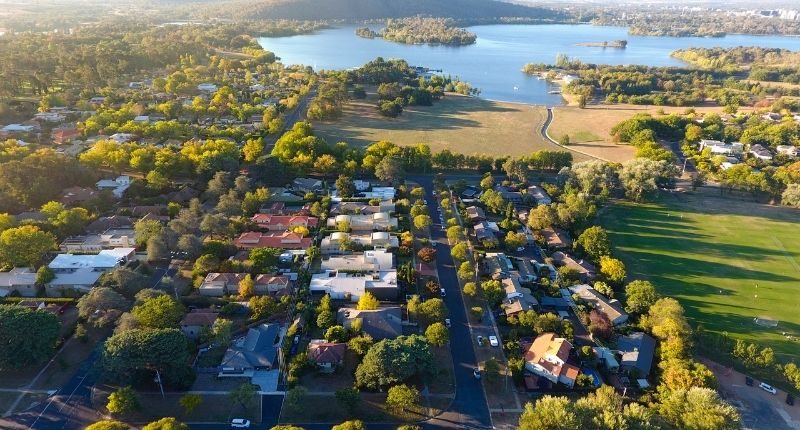- Earlier this year, the peak was $10 trillion
- Depsite the decline, over half of all household wealth is still held in real estate
- There is about $2.1 trillion of outstanding mortgage debt, which comes as interest rates continue to rise rapidly
Rising interest rates and higher inflation have continued to make their mark on the housing market, with the combined value of residential real estate falling to $9.5 trillion, from the previous peak of $10 trillion.
The CoreLogic Monthly Housing Chart analysis found that across the 10.8 million dwellings in Australia, there is still $2.1 trillion outstanding mortgage debt .
Also, the 551,981 sales annually has a gross value of $492.4 billion.
Despite the decline, over half of household wealth (57.8%) is still held in residential housing. Australian superannuation is worth around $3.3 trillion – despite our relatively small population, only a handful of countries such as Japan and the United States have larger retirement savings than Australia.
Additionally, Australian listed stock is valued at around $2.7 trillion, with $1.3 trillion in commercial real estate.
Changes in dwelling values, three months to October 2022

The data found that during the three months to October 2022, real estate values fell -4.1% Australia-wide. As previously reported, reginal South Australia is the only capital city or rest-of-state region to have recorded growth in values, with a 0.8% rise.
Rolling quarterly change in dwelling values

Brisbane and Sydney fell the most of the capital cities, with -5.3% and -5.4% decline in dwelling values respectively.
Rentals still on the rise
Annual rent changes national

The data found that there was a 10% annual change in rental rates. All capital cities and rest-of-state regions recorded a sharp rise in rents, ranging from 5.3% in regional South Australia to 13.5% in Brisbane.
Rental changes by region

“Rental value growth remains high across Australian dwellings, but the annual growth in house rents has shown signs of moderating. Unit rent values have seen increased momentum, rising 12.4% in the past 12 months. Across all dwellings, this resulted in an annual rental growth rate of 10.0%,” noted the CoreLogic research.
In terms of rental yield, this rose to 3.7% from a low of 3.21% in January this year, due to lower house prices.
Given the strong resources sector, regional Northern Territory and regional Western Australia recorded the strongest gross rental yields, at 6.4% and 7.1%. However, of course, investing in mining areas can be highly cyclical.








